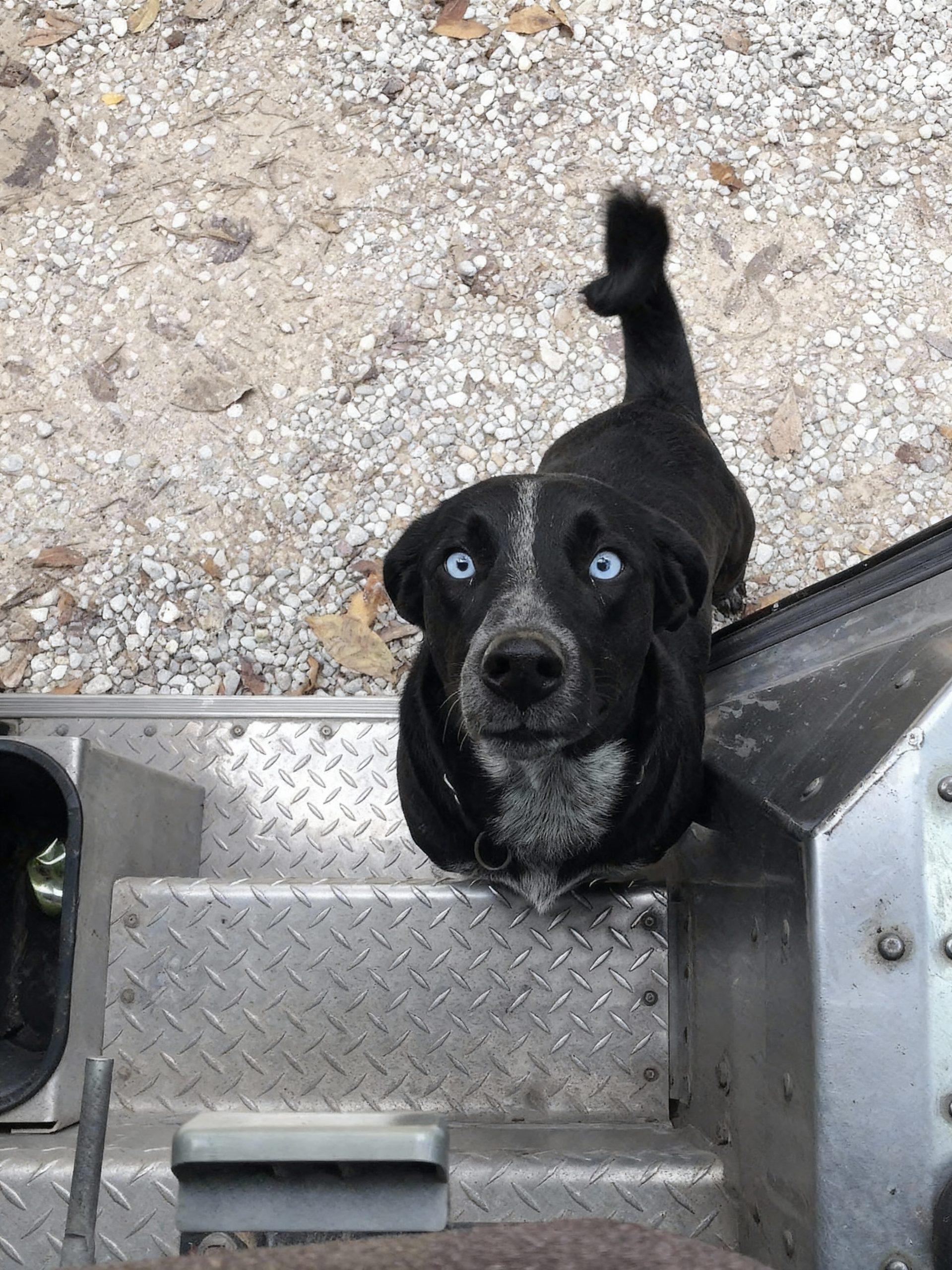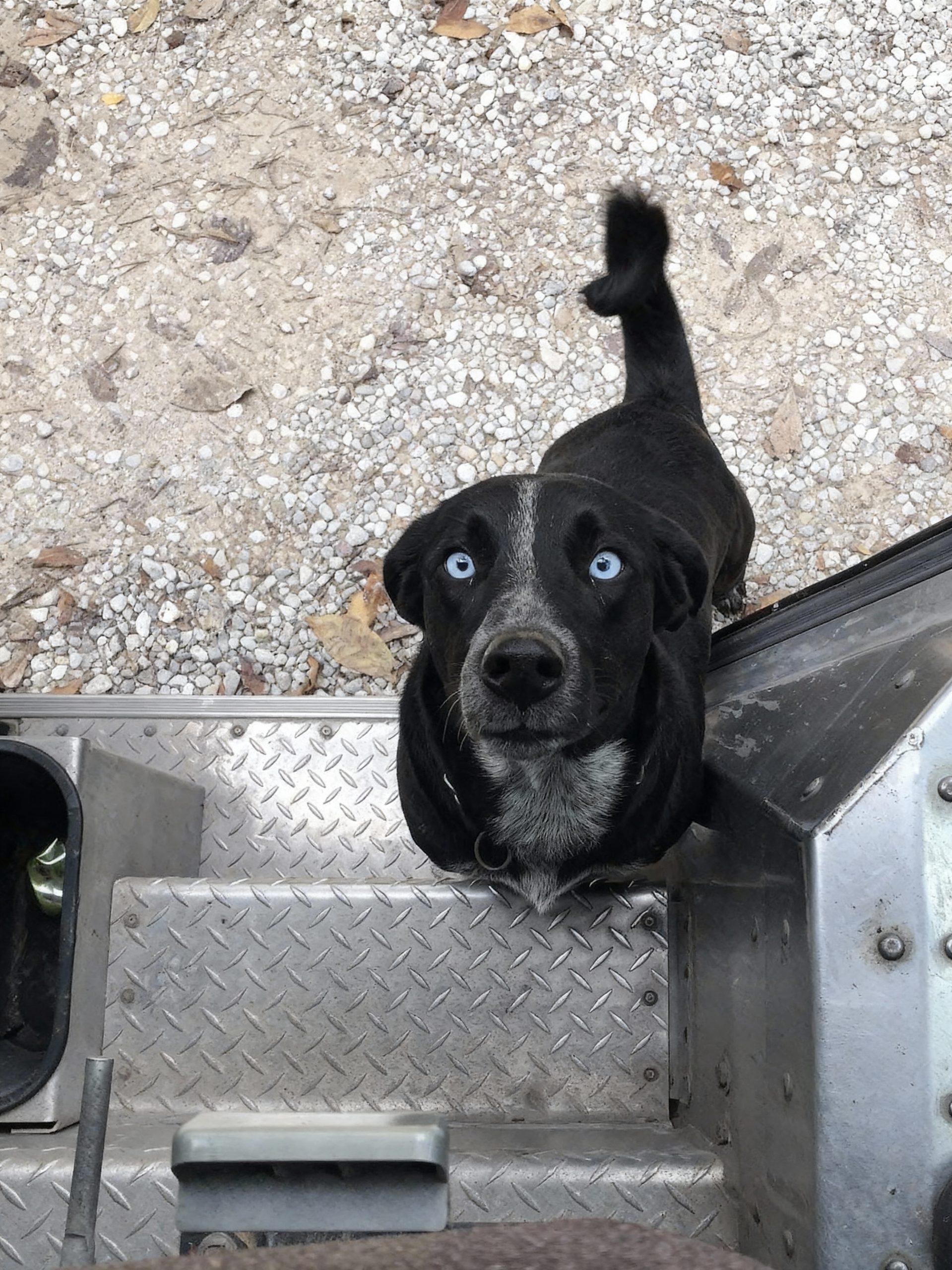The captivating gaze of a dog with brilliant blue eyes is an unforgettable sight, as beautifully exemplified by the enchanting canine in the accompanying image. This striking feature, often associated with specific breeds, is more than just an aesthetic marvel; it’s a fascinating display of genetic diversity and a window into the intricate world of canine heredity. While many might immediately think of Siberian Huskies or Australian Shepherds when blue eyes come to mind, a closer look reveals that this trait can appear in a wider array of breeds and even mixed breeds, often due to intriguing genetic mechanisms. The dog in our image, with its soulful blue eyes contrasting against a dark coat, embodies this unique charm, drawing us in with an intensity that speaks volumes about its individuality and the captivating power of its gaze. This article will explore the genetic underpinnings of blue eyes in dogs, delve into the various breeds where this trait is common, and discuss the myths and realities surrounding blue-eyed canines.
The genetic basis for blue eyes in dogs is complex and can be attributed to several different genes and mutations. One of the most well-known mechanisms involves the Merle gene. The Merle gene is responsible for diluting eumelanin (black pigment) in irregular patches, which can result in a marbled coat pattern and often, blue eyes. Breeds like Australian Shepherds, Border Collies, and Cardigan Welsh Corgis frequently exhibit blue eyes due to the presence of the Merle gene. However, it’s important to note that not all dogs with the Merle gene will have blue eyes, and not all blue-eyed dogs have the Merle gene. The expression of blue eyes can also be influenced by other modifying genes that interact with the primary pigment genes. This intricate interplay of genetics highlights the vast diversity within the canine genome and explains why blue eyes can manifest in such varied ways across different breeds and individual dogs.

Another significant genetic factor contributing to blue eyes, particularly in breeds like the Siberian Husky, is a specific mutation on chromosome 18. This mutation, distinct from the Merle gene, affects the expression of genes involved in eye color. In Siberian Huskies, this genetic variant is largely responsible for their characteristic piercing blue eyes, which can occur regardless of their coat color or pattern. This explains why a solid black Husky can have blue eyes, a phenomenon less common with the Merle gene, where blue eyes are often linked to diluted coat patterns. The discovery of this specific genetic locus has provided valuable insights into the independent evolution of eye color traits in different dog breeds, showcasing how nature finds multiple pathways to achieve similar striking phenotypic outcomes.
Beyond the Merle gene and specific chromosomal mutations, blue eyes can also occur due to albinism, though this is rare in dogs. Albinism is a genetic condition characterized by a lack of melanin production, affecting skin, hair, and eye color. Dogs with albinism typically have very pale or white coats, pink skin, and light blue or pinkish eyes. However, it’s crucial to distinguish between a blue-eyed dog and an albino dog, as the underlying genetic causes and associated health considerations can be very different. True albinism in dogs is often associated with certain health issues, including increased sensitivity to sunlight and potential vision problems. Therefore, while blue eyes might be present, the overall presentation and accompanying features differ significantly from those seen in normally pigmented blue-eyed dogs.
Furthermore, partial or sectoral heterochromia, where one eye is blue and the other is a different color (like brown), or even where a single eye has patches of blue and another color, is another fascinating manifestation of eye color genetics. This often occurs when the genes responsible for eye pigment expression are not uniformly distributed or activated during development. Breeds such as Australian Shepherds and Siberian Huskies are also known for exhibiting heterochromia, adding another layer of unique charm to their appearance. The presence of heterochromia can make each dog truly one-of-a-kind, with their mismatched eyes telling a unique genetic story. This phenomenon is a testament to the subtle variations that can occur in genetic expression, leading to a stunning array of visual characteristics.
While the aesthetic appeal of blue eyes is undeniable, there are some myths and misconceptions surrounding them, particularly concerning health. One common myth is that all blue-eyed dogs are deaf or have vision problems. This is not entirely true. While there is a correlation between the Merle gene, blue eyes, and an increased risk of deafness or blindness, especially in dogs that inherit two copies of the Merle gene (double merles), blue eyes caused by other genetic factors (like in Siberian Huskies) are generally not associated with these health issues. Responsible breeding practices are crucial to avoid breeding double merles, as they face a significantly higher risk of severe health problems. For blue-eyed dogs not carrying the Merle gene, their blue eyes are typically just a beautiful cosmetic trait with no inherent health implications.

The personality and temperament of blue-eyed dogs are as varied as their genetic origins. There is no scientific evidence to suggest that blue eyes are linked to specific personality traits. A dog’s temperament is primarily influenced by its breed characteristics, early socialization, training, and individual experiences, not by the color of its eyes. The dog in our image, with its intense yet gentle gaze, exudes a sense of curiosity and warmth, demonstrating that the appeal of blue-eyed canines goes far beyond their striking appearance. Their captivating eyes merely add to their overall charm, making them stand out in a crowd and often leading to instant adoration from those who encounter them.
In conclusion, the enchanting blue eyes of dogs, as magnificently captured in our featured image, are a testament to the incredible diversity and wonder of canine genetics. From the intricate workings of the Merle gene to specific chromosomal mutations and even rare instances of albinism, multiple genetic pathways can lead to this captivating trait. While some blue-eyed dogs, particularly those carrying the Merle gene, may require careful breeding considerations to ensure health, many blue-eyed canines are simply blessed with a stunning visual characteristic that adds to their unique beauty. Understanding the science behind these azure gazes deepens our appreciation for these remarkable animals and reinforces the idea that every dog, with their individual quirks and features, is truly a work of natural art.






